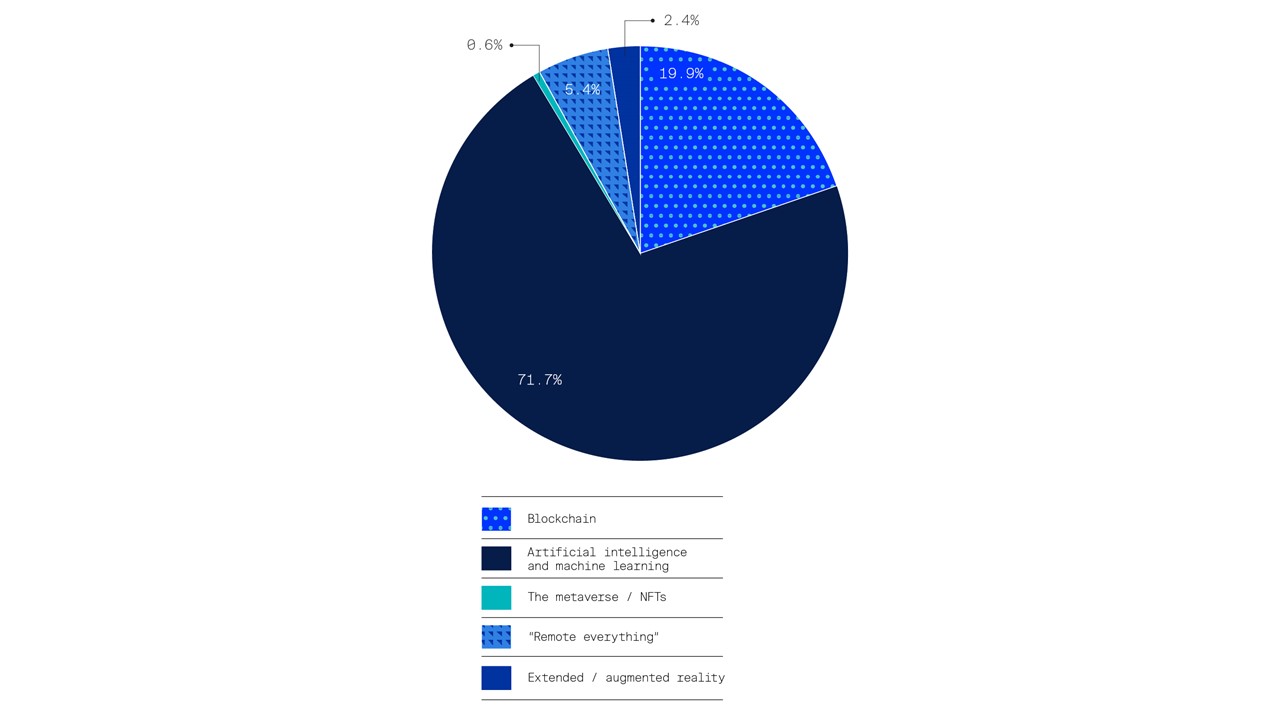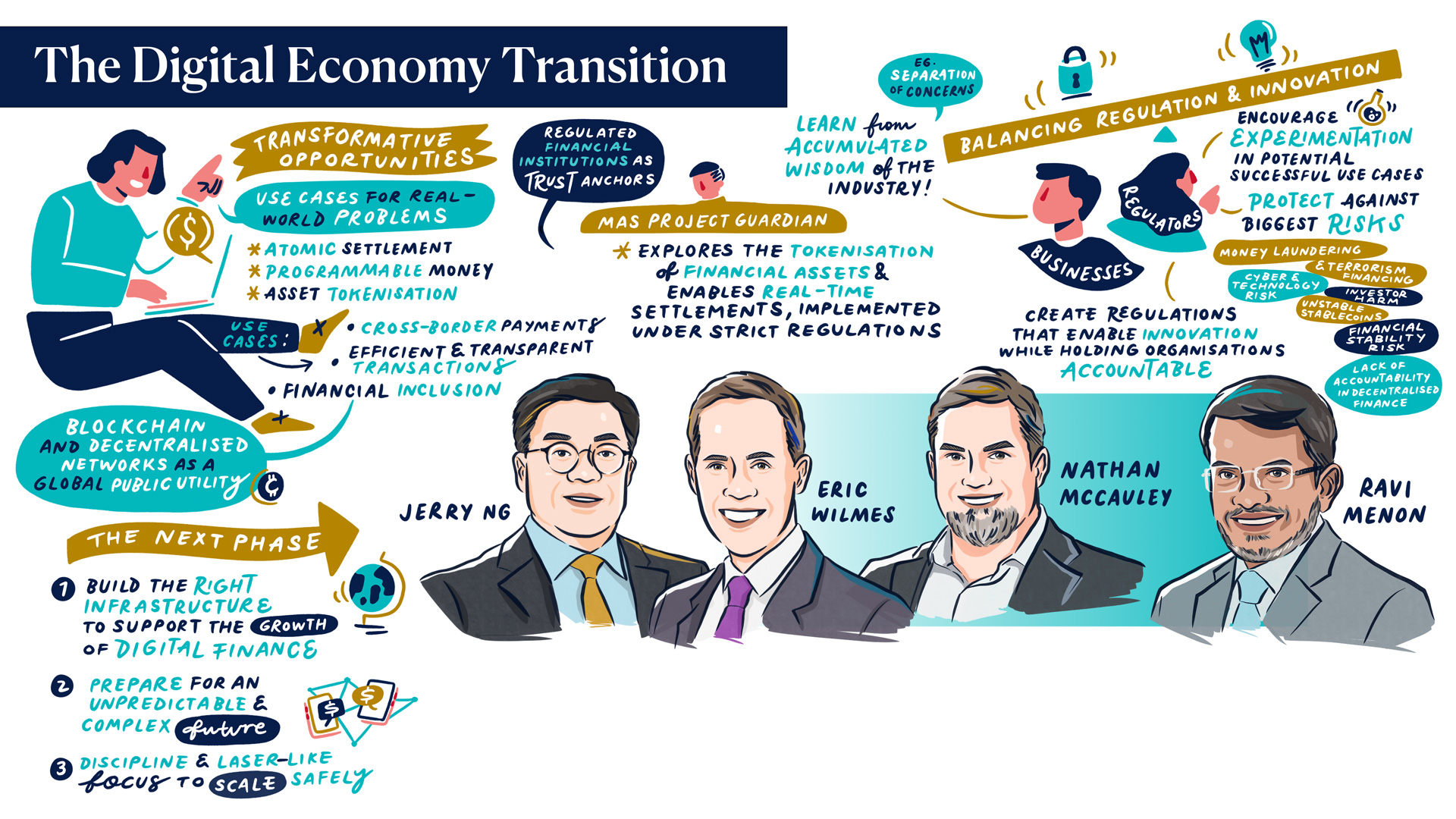This article is an adapted summary of the panel discussion featuring Nathan McCauley, Co-Founder and CEO of Anchorage Digital; Jerry Ng, Founder and Chairman of Bank Jago; and Ravi Menon, Managing Director of the Monetary Authority of Singapore (MAS), at GIC Insights 2022, which took place on 15 November 2022 in Singapore.
Moderated by Eric Wilmes, GIC’s President of Americas and Head of Private Equity, Americas, the speakers discussed how the global financial industry can harness opportunities, manage risks, and balance regulation with innovation as the digital economy continues to evolve.
As we look towards leveraging technology to solve real-world problems, where do you see the greatest opportunities?

Source: GIC Insights 2022 audience poll
Digitalised finance can be transformative, if applied correctly
With the recent fall of FTX and the Luna crypto crash earlier last year, a series of market developments have shaken global confidence in cryptocurrencies.
While these fallouts have destabilised the crypto world, the panellists believed that the future of blockchain technology – a digitally distributed, decentralised, public ledger that facilitates the process of recording transactions and tracking assets in a business network – remains bright. For blockchain to be used successfully, innovators should focus on using this technology on real-world problems and use cases, coupled with the right governance.
In particular, the speakers shared that in the digital asset ecosystem, the use cases that can ride on the concepts of atomic settlement, programmable money, and asset tokenisation will be most transformative for the following reasons:
- Firstly, blockchain technology can potentially provide greater convenience in regional cross-border payments. Through such initiatives, the panel noted that digital technologies have the potential to reduce inefficiencies in the pre-trade and post-trade capital markets, avoiding duplicated reconciliation exercises and double invoicing in banks, for example. This is how a distributed ledger with digital tokens can work to enable efficiency.
- Secondly, the panel agreed that digitalisation and digital assets can potentially drive greater financial inclusion. With over 1.7 billion people without access to financial services globally, blockchain and decentralised networks have the potential to be leveraged as a global public utility. Such use cases can drive globalisation forward, which has been receding in recent years. Asset tokenisation can also be used to monetise collaterals, potentially enhancing financial and social inclusion.
- Thirdly, the panel observed that digitalisation can pave the way for greater transparency. By using a distributed ledger, blockchain technology ensures that all transactions are tracked, making the data easily visible. Despite its public nature, these transactions also cannot be manipulated or deleted, eliminating the risk of fraudulent activities.
Maintaining an optimal balance between innovation and regulation
The speakers, however, also agreed that regulation will be critical for blockchain to thrive and for digital innovation to continue. Smart regulation will engender trust, while minimising risks such as:
- Money laundering and terrorism financing
- Cybersecurity and technology threats
- Investor harm (retail investors often put in more money than they can afford to)
- Stablecoin instability
- Financial instability (ensuring the volatility of the crypto market does not spill over to the formal financial system)
- Lack of accountability in decentralised finance (Tokenisation enables decentralised finance which removes the need for finance intermediation. This introduces risks as transactions can be carried out through smart algorithms and are often made anonymously.)
While there are worries that smart regulation could hamper innovation, the panellists believed the two can co-exist. For instance, stablecoins can be backed by full reserves in cash or a cash equivalent like gold. Being pegged to cash or commodities allows supply to be controlled, providing them with a firm value.
As an example, MAS has been working on several pilot programmes that look to combine smart regulation with blockchain innovation. One of them is Project Guardian, a programme that explores the tokenisation of financial assets and enables real-time settlements, while being implemented under strict regulations. This programme enhances security by using regulated financial authorities as trust anchors to verify entities and check their credentials. Ultimately, strict protocols must be enforced to establish accountability in a decentralised financial market.
Additionally, the panel noted that there is also a need for regulation to address the separation of concerns as many crypto companies often combine huge numbers of offerings onto a single platform, where they can play the role of a custodian, an exchange, and a trading firm all in one entity.
Building the right infrastructure to support the growth of digital finance
As the global financial industry evolves alongside the digital economy, the panellists discussed that the next step is to create a proper set of infrastructure to support its growth. This will build greater connectivity across countries and foster proper governance, setting the rules of the game in the digital realm.
Beyond infrastructure, digital finance institutions and banks also need to prepare for a complex and unpredictable future that will elicit both excitement and concern. To protect their balance sheets and be ready to adjust in an agile manner, financial institutions will need to have a combination of defensive and offensive strategies.
Ultimately, the panel surmised that digital finance, especially led by blockchain technology, while promising, remains very much in its infancy. Scaling it safely will require discipline and a laser-like focus on applying it to real-world problems.







